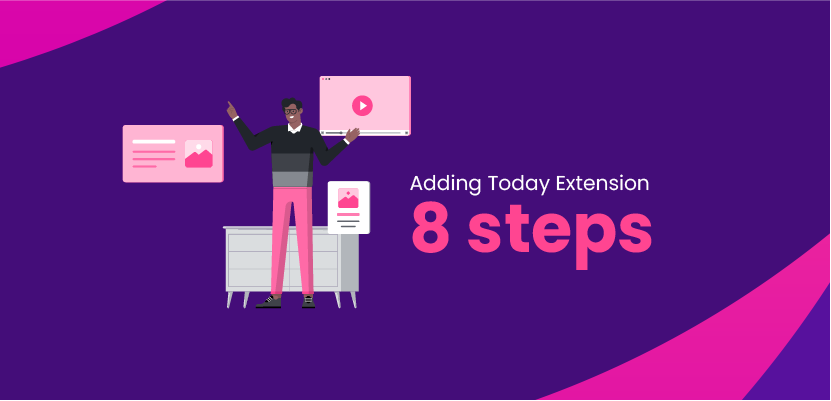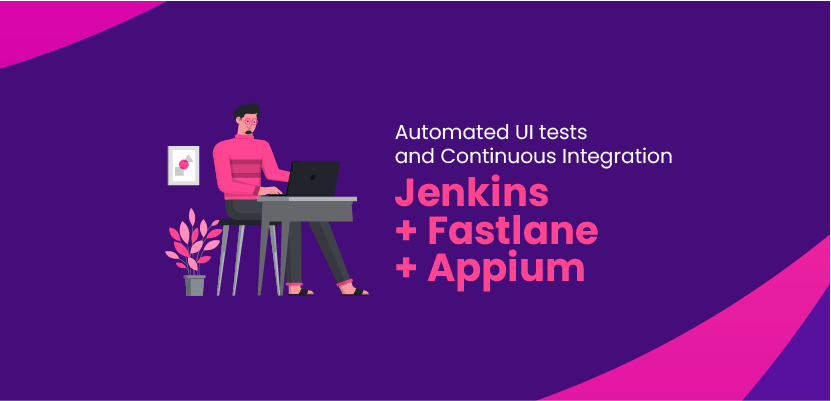12 top brand apps built with React Native

Paulina Chmielewska

Karol Wegner

In recent years, one of the most popular topics in the world of mobile app development services is cross-platform: React Native, Flutter and other established and emerging technologies are catching increasing attention from all sides… As we have had React Native among our services for a while now and introduced Flutter some time ago as well, we keep researching the applicability of these technologies across various industries.
Table of contents
- Facebook Ads Manager and Analytics
- AirBnB
- Discord
- Uber Eats
- SoundCloud
- Walmart
- Discovery VR
- Skype
- Adidas Glitch
- Bloomberg
- Summary of top 12 Apps built with React Native
Today I’d like to present a list of popular apps created using React Native to show the possibilities cross-platform development offers to the solution providers. Read on to find out how some world-renowned brands utilize cross-platform technologies in their mobile software solutions.
#1 – Facebook Ads Manager and Analytics
I had some concerns if I should be mentioning this one, as there’s a common misconception that Facebook is entirely written in React Native. That is not quite accurate. Although Facebook created the technology (rolled out in 2013) as a result of an internal Hackathon project, the reality is that the Facebook app uses React Native only in some parts, the focus being mainly on the Events Dashboard and Marketplace.
The same applies to the Facebook Analytics part of the app, where using React Native made sense because of outstanding capabilities in data presentation. The performance speed also was a big plus. Facebook Ads and Analytics create an ecosystem for brand promotion on social media that is used by many marketers around the world.
#2 – Instagram
In 2012, Instagram was bought by Facebook and became a part of a prominent social media market leader. It was a matter of time when Facebook decided to apply their own framework to Instagram’s code. It all started in 2016 when Facebook engineers began to plan to integrate the cross-platform technology into a native app.
In the beginning, push notifications were implemented using React Native. The whole roadmap of rebuilding the Instagram mobile app into a React Native app was pretty challenging, which was told by Instagram and Facebook crew in the article on Medium in 2017. They focused on performance, profile editing view, post promotion feature, content saving feature, comment moderation functionality, checkpoints and ads.
What transpired was that React Native development is much faster for both Android and iOS apps. That is why nowadays, 99% of Post Promote, 97% of SMS Captcha Checkpoint, 85% of Comment Moderation, 87% of Lead Gen Ads and 92% of Push Notification Settings features share the same code across platforms. The company says that they are going to continue building the app with React Native.
#3 – AirBnB
This was one of the most popular mobile apps built with React Native. Airbnb keeps researching and evaluating new technologies to provide the best user experience. Their choice of React Native was based on the goals they set – moving faster as an organization, maintaining quality similar to native apps while improving the developer experience and writing a single codebase for their product instead of two separate codes. In 2016, Facebook’s cross-platform framework ticked all the boxes.
Their experiment with React Native bore fruit in the form of several critical products launched in the framework. As much as React Native delivered on the set goals, it turned into a serious effort in terms of integration with existing native apps infrastructure and enabling complex native features.
After almost two years of using React Native, the experience Airbnb reported was that the framework was an incredible tool, but at the same time posing technical and organizational challenges.
In 2018 the Airbnb suddenly announced their decision to phase out React Native by 2019 and return to native app development.
As their extensive platform required a large number of complex native components and features, turning to native mobile frameworks was a logical choice. Airbnb concluded that React Native might be an excellent choice for many mobile apps and, all in all, they really liked the framework, but it simply did not fit their growth strategy.
#4 – Discord
Discord is one of the most popular voice and chat communication services in the gamers’ community. The biggest TeamSpeak’s competitor took their chances with React Native and now claim it helped them to successfully drive their iOS mobile app user adoption from zero to millions worldwide. Discord pride themselves on adopting the framework the very day it was rolled out for both Android and iOS.
Discord values React Native for its capacity to keep development teams small and efficient. The company summarizes React Native thus: “At Discord, it has brought us incredible efficiency. It allows us to write reusable code, learn from each other, and move fast with a two-person team. Although there are real pain points and challenges, the overall gains significantly outweigh the costs, which motivates us to keep investing in the platform.”
#5 – Uber Eats
Another established brand which is using React Native in their software engineering department. The Uber Eats dashboard was built as a web app first, so the devs from Uber needed to pick a technology that would allow them to quickly create a mobile app for their clients on iOS and Android. They decided that using React Native will be the best choice.
On their blog, Uber describes the stages of developing a React Native app for food delivery with all the core functionalities and additional features. As they say: “While it would be premature to call React Native the silver bullet of mobile app development, it did seem to fit the UberEATS use case very well.” They even share pieces of code that were used to make their React Native mobile app. It’s proof that a multi-platform framework can be used for highly interactive apps.
#6 – SoundCloud
SoundCloud Pulse took a steady and reasonable approach to use the new technology for their mobile app. They started thinking about React Native five months after the release of the framework. They’ve had plenty of experience in native app development already, which helped to adopt React Native as seamlessly as possible. The work was initialized with creating a prototype and started getting familiar with the new framework.
“We started working on the app with two JavaScript engineers and one iOS engineer. There were no designs for the iOS app yet, but we knew that we needed to reach feature parity with the Android app and so we used the Android app as a blueprint for the iOS version.” – Jan Monischke and Peter Minarik say in their blog post.
The main reason for turning to React Native was the shortage of native mobile engineers who would be available for developing new mobile apps, so the SoundCloud team had to make do with what they had – 2 JavaScript and 1 iOS devs, who formed a new, cross-platform development team. Once the project took off, the company kept finding more and more reasons for sticking with React Native. SoundCloud’s React Native summary blog post explains the experience in more detail. After the experimental phase, they decided to continue with React Native mobile app development and implemented the framework in more places at SoundCloud.
#7 – Walmart
Walmart App was made to enable customers browsing the shop’s product offer, check prices in-store, order shopping online, or pay for purchases using Walmart’s Payment system. Due to the app’s high complexity and a large number of features, Walmart decided to build a solution with React Native to reduce development team size. Separate iOS and Android teams for a project of this size were not efficient enough in Walmart’s view. This is how the company justifies their decision: “Native implementation is great in theory, but practically, we need to think about productivity/code sharing/time-to-market, which is where a cross-platform framework like React Native comes in.”
Today, 95% of the codebase is shared between iOS and Android apps. Costs of development were reduced with a single team working on both platforms. Walmart analyzed the effectiveness of the project and summed it up, pointing out the pros and cons of the React Native framework. In their words: “We strongly believe that React Native is a fantastic framework. It’s done everything we wanted of it, and it’s done so admirably. While it does have a few issues, those issues are overshadowed by the mountain of benefits you get from using it.”
#8 – Pinterest
Pinterest didn’t jump into the cross-platform trend straight away. They took a more cautious approach, watching React Native grow and develop over time. Eventually, they decided to employ the framework for their mobile app project. First, they prototyped a small-scope feature with a high impact potential – the Topic Picker view. Pinners (Pinterest users) see this view after they sign up as one of the critical screens during onboarding.
The code sharing between platforms came as a positive surprise to the development team: “Using React Native, the initial implementation on iOS took about 10 days, including bootstrapping all the integrations into our existing infrastructure. We were then able to port the screen over to Android in two days with 100 percent shared UI code between the platforms, saving more than a week of implementation time.”
A very positive first impression encouraged the company to continue with React Native. After a thorough evaluation, they understood how using the framework could be advantageous for their mobile app. “For us, the biggest potential benefit is the increase in developer velocity. React Native enables us to share code between platforms. […] Less time is required for stand-ups and meetings, as well as fewer inconsistencies between the platforms.”
Based on the potential benefits, Pinterest decided to have React Native as an additional tool in their mobile apps engineering toolbox alongside native technologies. The full conversion into the React Native app was never their end goal, but they did use the framework for more parts of the app.
#9 – Discovery VR
Who doesn’t know Discovery Channel? The company behind it is taking it to the next level offering their audience new, immersive experience of their productions. They decided to invest in virtual reality to put their users closer to real action in far and distant world locations. You don’t just watch a video anymore. Now you can virtually experience the adventure: surfing, hiking, skiing, base jumping or diving. The app also hosts exclusive content from Discovery Channel’s shows.
Discovery Channel built their user experience with React Native. With a VR headset, you can enhance the 360-degree views and pick your own adventure for the lazy home afternoon.
#10 – Skype
Skype users have been complaining about the user experience of the mobile app. It was outdated, in some parts borderline obsolete, and the performance was in constant decline. Microsoft decided to revamp the app completely. The company built a new mobile app with React Native, refreshed the design and added a variety of new features. Although the new design borrows heavily in style from the original native apps for iOS and Android, the UX is incomparably better.
Skype development team used React Native not only for their mobile apps but also for the Windows desktop app. The framework allows building Android and iOS mobile applications, but it is less common knowledge that it can also be applied to Windows apps.
#11 – Adidas Glitch
The idea behind Adidas Glitch was to bring a new approach to product promotion. “A pair of boots which is distributed only via an application” was the original idea. The developers’ task was to write a mobile app that would personalize the experience of acquiring an exclusive product – Adidas’ Glitch football boots with an insert. The app’s graphic design was crucial and the main goal was to accentuate the skin/insert feature of the boots and show it as close to a real-life experience as possible.
The React Native development team worked with the iOS app first, and only after the rollout jumped onto Android. The graphic transitions turned out most challenging with the need to use OpenGL for the product to be presentable and according to design. Developing the product selector and customization did not pose issues and React Native proved the right pick for this project.
The most positive aspect of using the framework was that the Android app, which was developed after the iOS but using the same codebase, ran very well from the start and required very few adjustments – mainly to layout and performance. The iOS app was released following approximately 5 months of development; the Android version was rolled out in only 1 month thanks to a shared codebase.
This React Native mobile app won 12 awards in 2017 at Cannes Lions, Campaign Creative Tech Awards, Clio Sports Awards and Masters of Marketing Awards.
#12 – Bloomberg
Bloomberg released their app in December 2016. After testing and prototyping the React Native framework, the New York giant decided to redesign the consumer app using cross-platform. React Native proved the best available tool on the market to create native apps simultaneously for iOS and Android. This is what the company had to say about how React Native helped them speed things along: “(…) benefit of React Native is that it automates code refreshes, accelerating the release of new product features. Instead of recompiling, your app reloads instantly.”
“React Native is the best out there,” Gabriel Lew, a senior software engineer at Bloomberg who led the development team’s efforts, said, adding: “Expect it to appear in other Bloomberg mobile apps in the future.”
Summary of top 12 React Native mobile apps
There are many, many more apps built with React Native that I didn’t mention. This time I wanted to focus on the big brands that saw the potential to build apps in React Native. Some of them stick to this technology and see some truth in React Native being the holy grail of mobile app development. Some of them use the framework in parts of their solutions and others look for different solutions – native and cross-platform alike.
There are pros and cons of React Native app development and we believe that it could work for your solution as long as it ticks all the boxes in the “applicability” column. Conversely, there are quite a few React Native myths that have been circling around for a while – don’t believe everything you hear.
I want to leave you with the thought that there are always options in the app development. We can pick and choose between native or cross-platform development – the final decision will always be based on what’s faster, easier or cheaper.
If you need a business partner to create an app for you – contact us. We develop mobile and web products using React Native, Flutter and many other technologies.
Don’t know if your solution could be developed in React Native
or you need native iOS and/or Android?
Contact us and let’s talk about possibilities.




